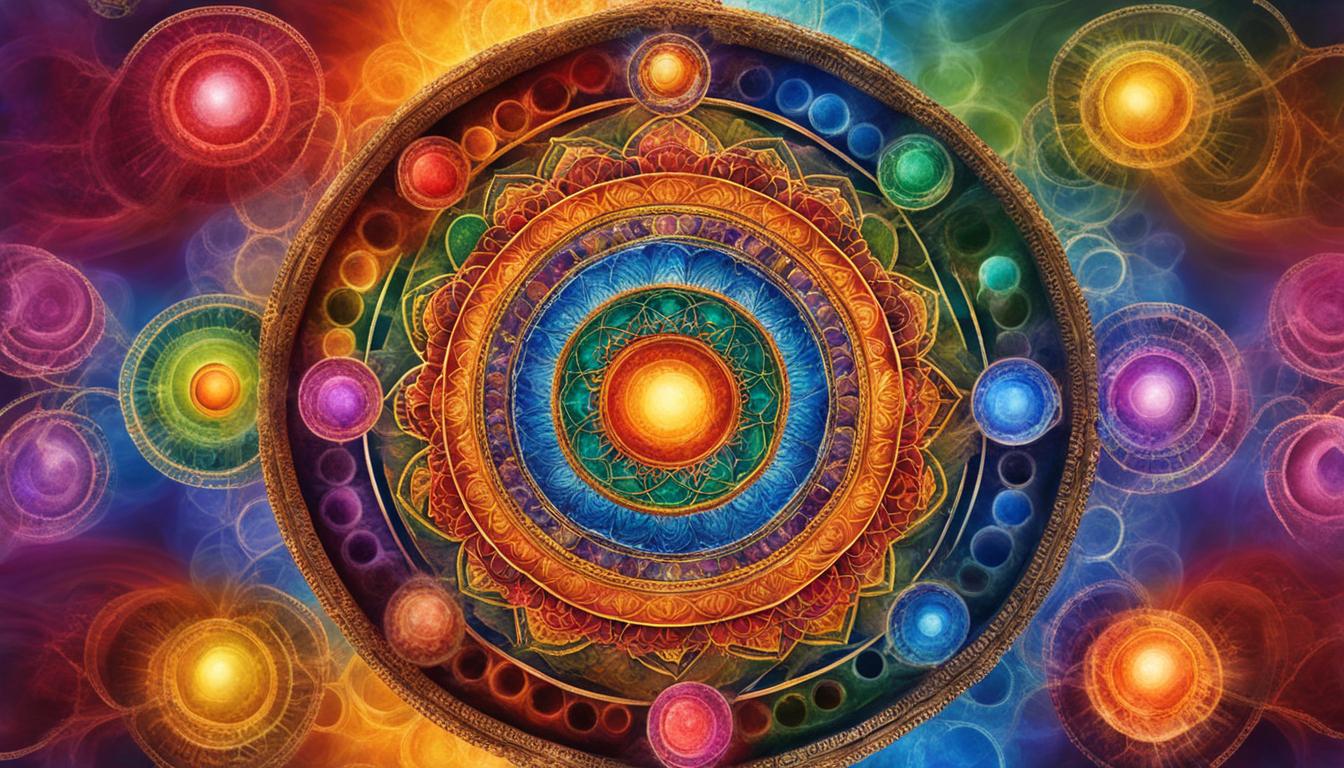When we sit still and attempt to meditate or engage in mindfulness practices, it is not uncommon to experience a swaying motion in our bodies. This phenomenon is often observed during meditation and can be attributed to the movement of our chakras, the energy centers in our bodies.
According to various sources, including personal anecdotes and spiritual teachings, this swaying can be explained by the activation of Kundalini energy, the coiled energy at the base of our spine. When our chakras are not fully aligned or when blockages exist, the Kundalini energy is unable to move upward and instead swirls or rocks inside us, resulting in the sensation of swaying.
Key Takeaways:
- The swaying motion during meditation can be attributed to the movement of our chakras.
- It is often caused by the activation of Kundalini energy.
- Chakra alignment and the removal of blockages can help ease the swaying sensation.
- Seeking guidance from experienced teachers or instructors is recommended for a safe and balanced meditation journey.
- Exploring additional techniques such as visualization and breathing exercises may offer insights into the underlying causes of swaying.
What Does This Energy Feel Like?
During meditation, the experience of swaying can vary from person to person. However, many practitioners describe it as a delectable sensation of spiritual bliss and unity. This energy, often referred to as spiritual energy, is believed to flow through our bodies, connecting us to a higher level of consciousness.
When the chakras, the energy centers in our bodies, are in balance, the energy flows smoothly, resulting in a harmonious and peaceful state. The swaying motion during meditation can be seen as a sign that there is more internal work to be done to achieve this balance.
By unblocking the chakras and allowing for a smoother flow of energy, practitioners can achieve a state of transcendence without the rocking motion. This can be done through various mindfulness techniques such as breathwork, visualization, and chakra cleansing exercises. These practices help to align and balance the chakras, allowing the energy to flow freely.
It is important to note that Kundalini awakening, the activation of the spiritual energy at the base of our spine, should be approached with caution. If stimulated too quickly, it can have negative side effects. Seeking guidance from a trusted teacher or instructor is recommended to ensure a safe and balanced journey.
By exploring the sensation of swaying during meditation and incorporating mindfulness techniques to balance the chakras and enhance the energy flow, practitioners can deepen their spiritual practice and attain a higher level of self-awareness and enlightenment.
Exploring the Swaying Phenomenon
Understanding the swaying phenomenon in meditation requires a willingness to explore multiple possibilities. Some believe that the swaying motion is the result of the stimulation of spiritual energy, particularly Kundalini energy, within the body. Others interpret it as a self-soothing response or even an expression of love. Each individual may have a unique experience with this swaying sensation, making it important to engage in self-reflection to gain deeper insight.
One approach to better understanding the swaying is to journal about the rocking sensation. By documenting the experience, individuals can identify any recurring emotions or patterns that may be associated with the swaying motion. Paying attention to the frequency of the swaying can also provide valuable information for further exploration.
Incorporating additional techniques into meditation practices can also offer insights into the underlying causes of the swaying. Techniques such as chakra cleansing, visualization practices, or specific breathing exercises can help individuals delve deeper into their spiritual energy and uncover any blockages or imbalances that may be contributing to the swaying sensation.
For those seeking guidance and a safe meditation journey, it is advisable to reach out to a teacher or instructor with extensive experience in meditation and spiritual practices. These experienced individuals can provide further guidance on exploring the swaying phenomenon and help individuals navigate their meditation practice to ensure a beneficial and transformative experience.
FAQ
Why do my chakras sway when I sit still?
When we sit still and attempt to meditate or engage in mindfulness practices, it is not uncommon to experience a swaying motion in our bodies. This swaying can be attributed to the movement of our chakras, the energy centers in our bodies. When our chakras are not fully aligned or when blockages exist, energy flow is disrupted, resulting in the sensation of swaying.
What does this energy feel like?
The experience of swaying during meditation can vary from person to person, but many describe it as a delectable sensation of spiritual bliss and unity. It is often seen as a sign that there is more internal work to be done, such as cleansing toxins, creating physical space, or addressing limitations in our lives. By unblocking the energy and allowing for a smoother flow, practitioners can achieve a state of transcendence without the rocking motion.
How can I explore the swaying phenomenon?
Understanding the swaying phenomenon in meditation requires a willingness to explore multiple possibilities. Some believe that the swaying motion is the stimulation of Kundalini energy, while others interpret it as a self-soothing response or expression of love. Each individual may have a unique experience. Incorporating extra techniques into the meditation practice, such as breathing exercises, grounding, or visualization, can offer insights into the underlying causes of the swaying.




